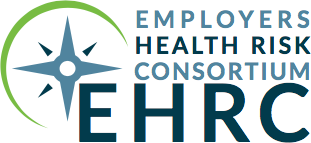Healthcare is Killing Your Bottom Line – An Examination of Misaligned Incentives
Author: Jonathan Crawford, LD&B Employee Benefits Consultant
Alright, let’s play a game. Imagine your healthcare plan as an actual business unit in your company. Now, pull up the financials. Costs spiral out of control, performance metrics are hidden, and your vendors—who should be optimizing spend—actually profit from inefficiency and make more money when costs go up. Most businesses just keep signing off on 8-12% annual cost increases like it’s some kind of corporate tax. Spoiler alert: it’s not. You demand financial discipline and efficiency in every corner of your business, but when it comes to healthcare? You are expected to rubber-stamp another bloated renewal that was proudly negotiated down below the benchmark – as if that’s some kind of victory. Would you keep funding that operation in any other area of your business? Of course not. You’d rip it apart, find the waste, and demand accountability.
The $5 trillion healthcare industrial complex is not set up for your benefit. Need proof? An MRI might be $500 or $5,000 depending on the logo on your insurance card. The “discounts” in healthcare are based on artificially inflated prices. The “proprietary” contracts that no one can see are designed to protect corporate revenue streams, not lower costs. Medical claim audits and disclosure of pricing and quality data are often forbidden. Meanwhile, the Medical Loss Ratio (MLR) has mandated permanent premium increases. Insurance carriers are trapped, by law, in a perverse business model where carrier profits are tied to a percentage of total premiums, inevitably forcing costs higher. And PBMs? Some of those “helpers” who negotiate drug pricing are running their own little casino, collecting manufacturer rebates (kickbacks), and engaging in spread pricing (charge your health plan one price but pay the pharmacy another). When a commission is generated per prescription filled, prescription volume is prioritized over reducing waste and optimizing therapy, which presents yet another layer of misaligned incentives.
And let’s talk about where all this waste goes. Is it driving better health outcomes? Nope. The system isn’t designed to keep people healthy—it’s designed to keep them just sick enough to generate revenue. Healthy people don’t generate revenue. But chronically ill patients? Jackpot. This “healthcare” system is really a sick-care business, where hidden middlemen profit every time your employees need another prescription, procedure, or specialist visit. And while that’s happening, the best and brightest doctors and nurses are facing burnout, fed up with a system that treats patients like billing codes instead of people.
The stakes are high. 49% of Americans get their health coverage through an employer-sponsored plan. According to the 2024 KFF Employer Health Benefits Survey, the average family health premium has now surpassed $24,000 per year. Factor in deductibles and out-of-pocket maxes, and the average American family’s annual healthcare spend is approaching 40% of the median household income. Here’s where you become the hero. You don’t have to play by these rules. Winning organizations are flipping the script, unbundling misaligned arrangements, and transforming their culture by treating healthcare like a business unit, not a sunk cost. They reject opaque pricing, ditch the legacy models, and demand a supply chain that serves them—not the other way around. Many explore partnerships with boutique, independent consultants who actually tie their fees to performance and can put compensation at risk to guarantee results.
Your health plan can be a strategic advantage or a financial black hole—the choice is yours. Employers that win this game are the ones that stop blindly funding the healthcare industrial complex and start managing their health plan like the business unit it actually is. Take control, cut costs, improve outcomes, and build a stronger business. Healthcare isn’t an unavoidable drain on your bottom line, it’s an opportunity. Are you ready to challenge the old model and win?

 (540) 433-2796 |
(540) 433-2796 | 


